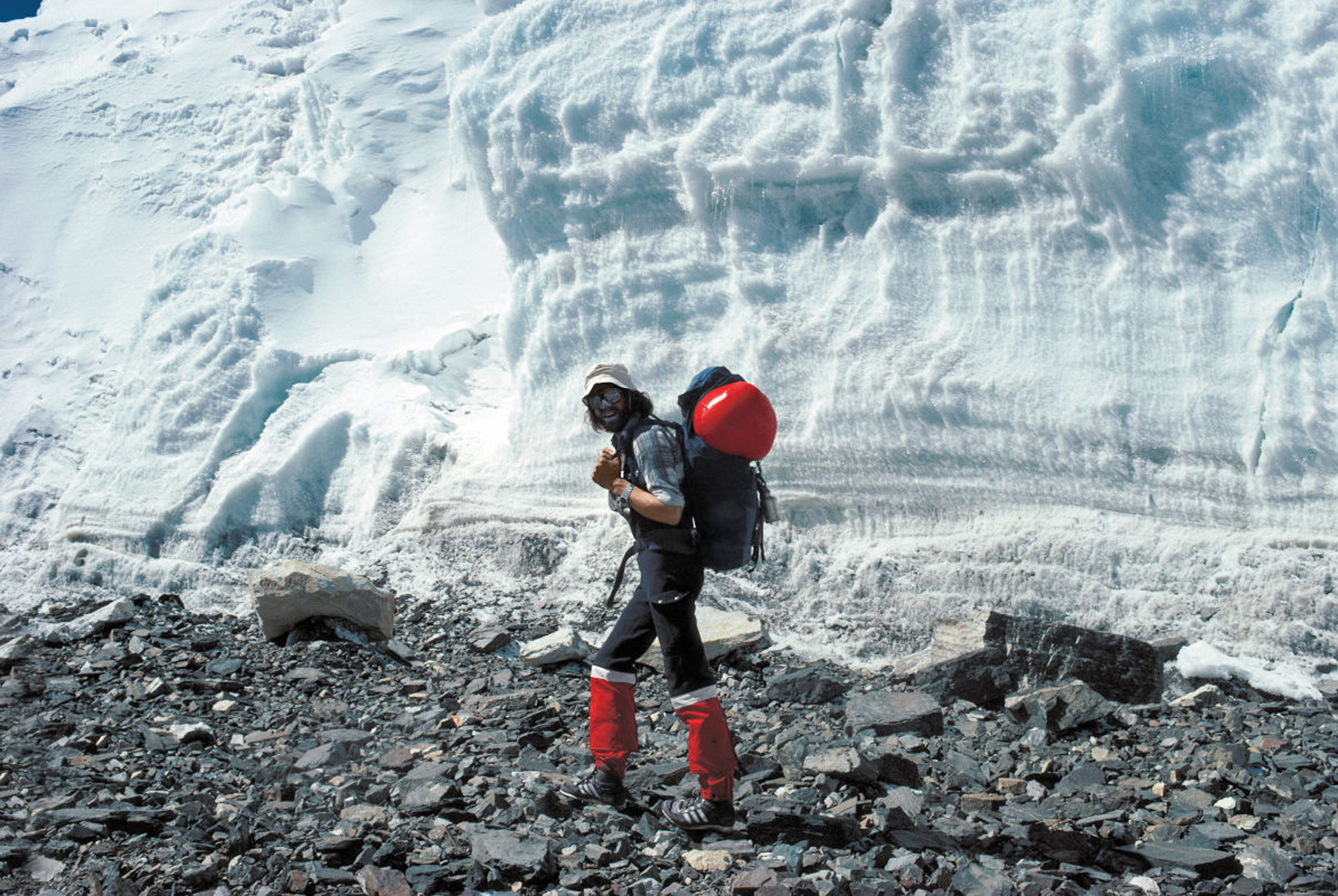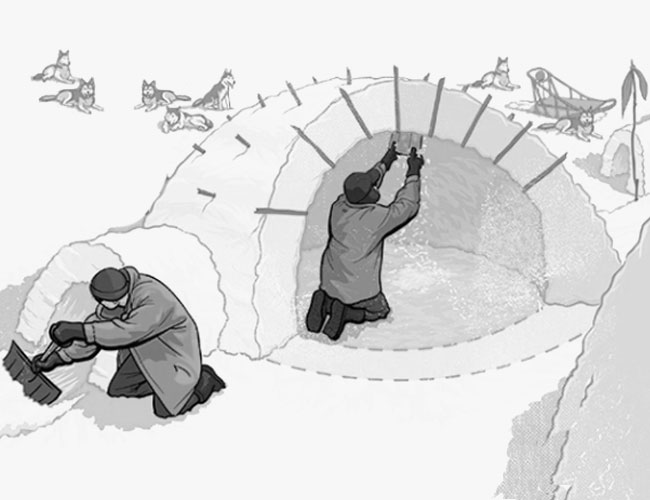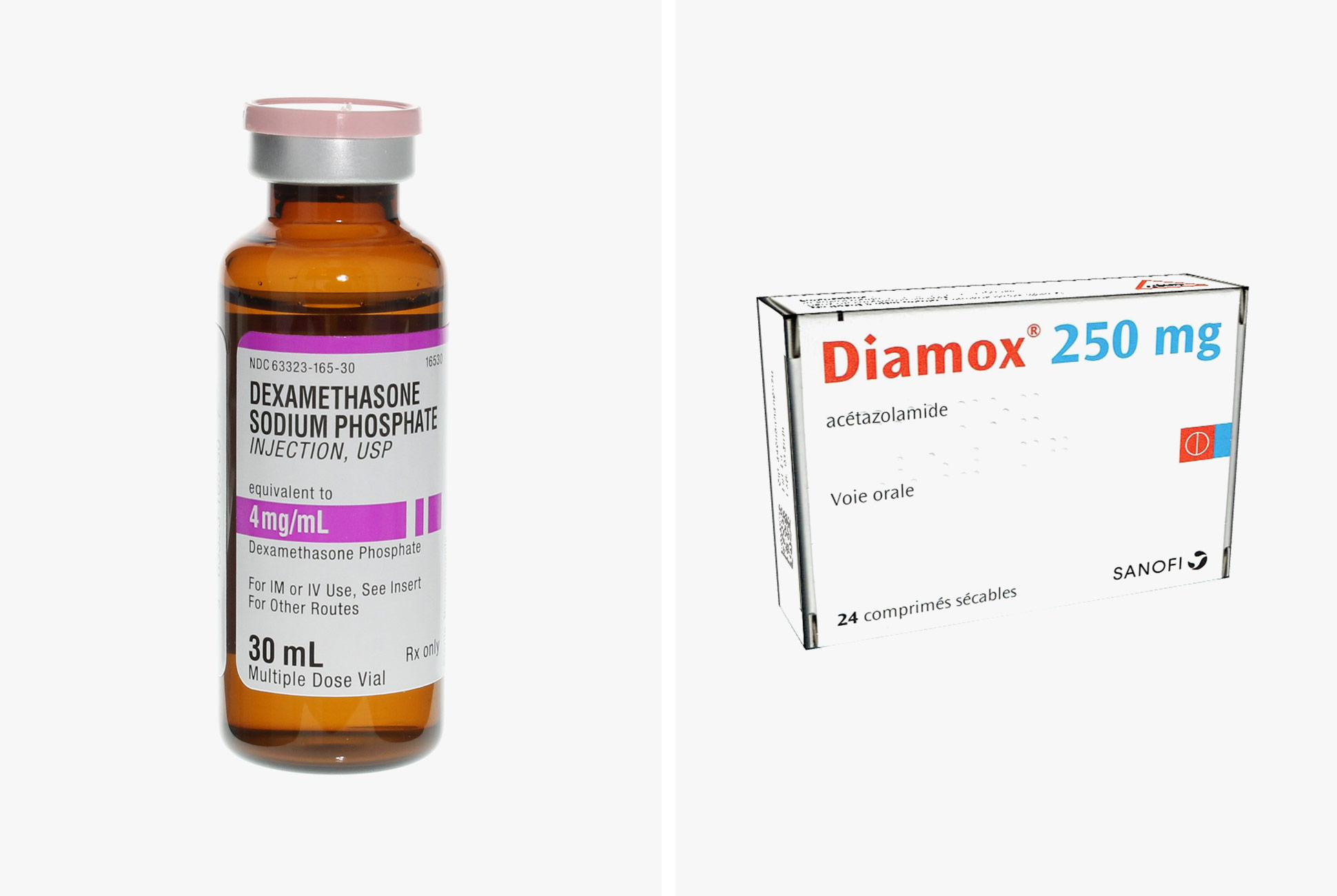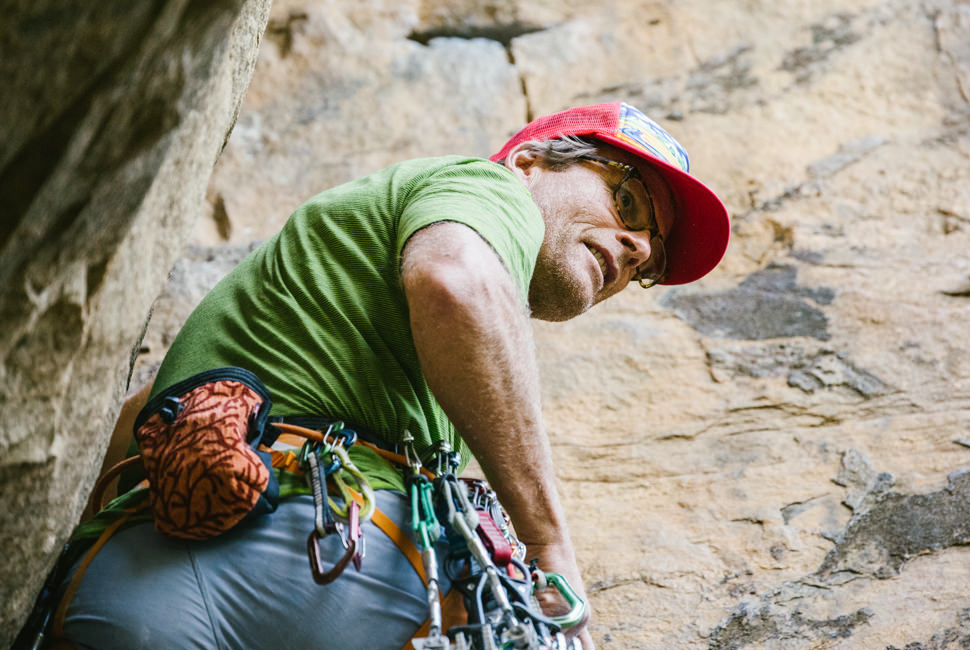Before Hermann Buhl’s first ascent of Nanga Parbat in 1953, the 26,660-foot peak in the western Himalayas was synonymous with death. Thirty-one climbers had died on summit attempts, including 10 in an infamous 1934 debacle. Many more had been thwarted by impossible conditions. But Buhl, a “small and delicate” (his words) 29-year-old Austrian, did it with a faulty crampon and without supplemental oxygen, Sherpa support, or Gore-Tex gloves. On his descent, he was forced to spend the night standing up in a notch below the summit, hallucinating while drifting in and out of consciousness. Then, at the end of his tether, as he recalls in his memoir, Nanga Parbat Pilgrimage, he remembered his methamphetamine pills, Pervitin: “It was the only chance; its brief renewal of my strength might last long enough for me to get down to the tent.” Pervitin — prescription speed, basically — was well known among German and Austrian climbers then for inducing superhuman energy and focus. It had been distributed during WWII to Nazi infantry, who called it panzerschokolade, or “tank chocolate.” Buhl popped two. Later on, he took some Padutin, a blood-flow agent that wards off frostbite, and eventually three more Pervitin; he had also been drinking tea brewed from coca leaves, the raw material for cocaine. Buhl survived. And as he hints in Nanga Parbat Pilgrimage, without the drugs, he wouldn’t have.
Buhl is widely considered one of the greatest alpinists ever, a shining model of the spirit and élan of high-altitude climbing. None other than Reinhold Messner — a Titan among climbing mortals — has called him “a classic mountaineer without equal.” To date, his Nanga Parbat route has been repeated just once. Yet Buhl was essentially tweaking his nuts off, or was at least well sauced on the alpine version of a speedball. By today’s standards, he’d be cast out from the mountaineering temple, stoned for blasphemy, and crucified on the nearest tree. It’s a given that alpinists now rely on all kinds of state-of-the-art technical assistance to get them through the rough spots — crampons, ice axe, helmet, emergency shelter, wicking base layers, hundreds of feet of dry rope, two-way radio, avalanche transceiver, sunscreen, lip balm, hand warmers, rehydrating juice — half of which Buhl lacked. Only a crackpot would suggest ditching any of it. But prescription drugs? Eh. Everyone knows that’s cheating.
It’s no surprise that 8,000-meter climbs can require a medicinal crutch, and Buhl is just one link in a long chain of doping in climbing that includes some of the most storied alpinists in history. Maurice Herzog and Louis Lachenal, twin spires in the sport, were both zonked on morphine when they broke the 8,000-meter barrier in a harrowing 1950 summit of Annapurna. Stephen Venables’s 1988 ascent of the Kangshung Face, thought to be insane at the time, was accomplished with the help of prescription-strength caffeine pills. I could go on.
“In Hermann Buhl’s day, drugs weren’t constructed as a problem — it was like taking a cup of coffee with you.” – Verner Møller
What’s surprising is the recent hand-wringing in the sport over prescription drugs and stimulants, on which alpinists have long relied. Steroids, amphetamines, erythropoietin (or EPO, Lance Armstrong’s drug of choice), epinephrine and nifedipine, morphine and codeine, what else? Viagra and Cialis, which increase blood flow to the lungs (among other places) and mitigate high-altitude pulmonary edema (HAPE). Lesser painkillers like aspirin and Ibuprofen. Rehydration salts and electrolyte solutions. All have been regularly used, if rarely discussed in mountaineering.


“The climber who doesn’t rely on his own strength and skills, but on apparatus and drugs, deceives himself,” wrote legendary mountaineer Reinhold Messner in his 1999 book Everest: Expedition to the Ultimate. But Messner also had great praise for Hermann Buhl, who used meth to survive a descent on Nanga Parbat in 1953; Messner’s own climbing partner, Peter Habeler, was “heavily drugged” during their legendary 1978 Everest summit, the first done without supplemental oxygen. (Photo: Adidas Archive)


Re-waterproof your rain jacket, get more life out of your tent, save your life in a winter snowstorm and more.
Read the Story
For much of the past half-century, when drug use in the mountains has cropped up, elite climbers were quick to vilify it — mostly they were concerned with the use of supplemental oxygen, which many still consider a betrayal of the lofty ethos of high-altitude climbing. The issue of prescription drugs and stimulants was largely ignored. But in 2013, a strange new drug hysteria swept mountaineering after Outside magazine published an article about an Everest climber who almost died after binging on multiple medications, including dexamethasone (dex), an anti-inflammatory steroid that lessens brain-swelling and is used to treat altitude sickness and high-altitude cerebral edema (HACE). Dex is a potential lifeline for alpinists struggling on big ascents like Everest. It has saved dozens of lives over the years — Beck Weathers got a four-milligram injection during the 1996 Into Thin Air disaster — and has been part of every guide’s first-aid kit for decades. But misusing dex, as the Outside piece detailed, carries some risks, and the article foretold of “a dangerous trend in mountaineering: rampant use of performance-enhancing drugs.”
Today’s professional climbers consider preemptive use of dex, or of any “performance-enhancing drug” for that matter, to be cheating, though there’s been scant public reflection on what “performance-enhancing” and “drug” might mean, and no regulatory agency exists in climbing to define it. Mild painkillers and stimulants like coffee and tea typically get a pass, and are even considered part and parcel of a climber’s gear, while prescription drugs and acclimatization meds like dex don’t; the use of supplemental oxygen falls somewhere in between. The upshot is a general state of confusion in the sport about what kinds of pick-me-ups are permissible at extreme altitude. Many climbers are reluctant to discuss the topic; in some quarters a veil of secrecy prevails.
“Climbers are definitely using performance-enhancing drugs and hiding it,” says Cory Richards, who recently summited Everest without the help of supplemental oxygen. “There’s no governing body in climbing, so there’s no rule against drugs, and the logic is, why disclose it?”
“Sucking Os is definitely doping. And it is clearly cheating. Not one ascent made with Os counts in my book.” – Steve House
Richards is mostly referring to dex when it’s used not as a recovery aid but as a failsafe measure to increase a climber’s chances of summiting. These days you can buy it on the street in Nepal for about a dollar. Some outfitters and guides are said to encourage its use on summit day. Dr. Luanne Freer, the founder of the Everest ER at base camp, has taken care of several climbers suffering from side-effects of dex and other prescription drugs, including one who took large doses of dex on his ascent and died of HACE near the summit. “Using dex on summit day as a performance-enhancer is dangerous,” she says. “It makes it less likely that it’ll work in a rescue situation. I would liken it to pulling the cord on the parachute too early. When you really need it, you’ve lost your rescue. For this climber, there were no drugs left to get him moving for descent.”
According to Dr. Peter Hackett of the Institute for Alpine Medicine, however, the misuse of dex is exceptionally rare. “In the Outside piece, the guy took dexamethasone every day for two months, which is really stupid. It was totally inappropriate use of a drug. If you use any drug that way, you can get into trouble…I think [the article] was more hype than reality, a big to-do about nothing.”
Another potential lifeline for climbers is acetazolamide, also called Diamox, which speeds up acclimatization and helps prevent altitude sickness. It, too, has been a part of high-altitude climbing since at least the 1970s. Unlike dex, however, Diamox’s side effects are fairly innocuous: it’s a diuretic, so it makes you pee a lot. While technically not a performance enhancer — Diamox actually inhibits your ability to exercise — climbers have been known to take it early on summit mornings to prevent altitude sickness. To purists, that still counts as cheating.


In 2013, a drug hysteria swept mountaineering after Outside magazine published an article about an Everest climber who almost died after binging on multiple medications, including dexamethasone (dex), an anti-inflammatory steroid that lessens brain-swelling and is used to treat altitude sickness and high-altitude cerebral edema (HACE). Another potential lifeline for climbers is acetazolamide, also called Diamox, which speeds-up acclimatization and helps prevent altitude sickness. To purists, that still counts as cheating.
Both dexamethasone and acetazolamide are banned by the World Anti-Doping Agency (WADA), which has helped monitor doping in the Tour de France and the Olympics. (It should be noted that the original Olympic athletes, in first-century Greece, had few qualms about doping; they ate sheep testicles, coca plants, hallucinogenic fungi and cacti, and drank seed extracts that contained pharmacological agents, “magic” wine potions and strychnine, in the hopes of gaining a performance edge. If caught, however, they were banned from the games for life.) WADA prohibits substances that fulfill two of three criteria: (1) they’re performance enhancing; (2) they’re harmful to your health; or (3) they run counter to the spirit of the sport. But WADA has no regulatory say in mountaineering, which is entirely self-governed. The only semi-official oversight in the sport comes from the International Mountaineering and Climbing Federation (UIAA), but it has little enforcement power either and concerns itself instead with preserving the ideological “spirit and traditions” of alpinism.
“Why should you only be allowed to use a drug in the event that you become sick or die, if you can prevent it beforehand?” – Verner Møller
In climbing, then, climbers make the rules. The professional take was captured by Reinhold Messner in his 1999 book Everest: Expedition to the Ultimate: “The climber who doesn’t rely on his own strength and skills, but on apparatus and drugs, deceives himself.” (One sentence later he decries the use of supplemental oxygen: “The face mask is like a barrier between Man and Nature.” More on that in a moment). In a later interview, he suggested drug-testing Everest climbers. “I am curious if anyone is willing to give a urine sample,” he said. Messner must’ve blanked on Buhl’s meth use, not to mention that of his climbing partner Peter Habeler, who was “heavily drugged” during their legendary 1978 Everest summit, the first done without supplemental oxygen. The implication seems to be that, for Messner, certain climbers and certain kinds of drugs — speed, painkillers — are acceptable, while the newer wave of bucket-list Everest summiters and the acclimatization meds they sometimes rely on aren’t.
Verner Møller, author of The Ethics of Doping and Anti-Doping: Redeeming the Soul of Sport? and professor of public health at Aarhus University in Denmark, thinks the moral censure on drugs in alpine climbing is at best an argumentative rabbit hole, at worst an obfuscating con intended to distance big-mountain climbers from the average schmo.
“The ‘purity’ of alpinism is a ridiculous concept,” he says. “It’s a narrative that elite mountaineers decided to write. But some of them, they’re sitting around drinking coffee at base camp and nobody questions it. A day may come when someone says, ‘You know, coffee has caffeine, which is a performance-enhancing drug, so you’re destroying the ideal of alpinism if you’re drinking coffee.’ And that would be a new narrative.”
Caffeine, it’s easy to forget, is the most widely consumed stimulant in the U.S., one that can have profound physiological effects: a sharp decrease in fatigue and the artificially stimulated release of fatty acids into the blood, allowing the body to conserve glycogen and increase physical output. It was only removed from WADA’s list of prohibited substances in 2004.
For Møller, there’s been a widespread “abdication of logic” with regards to drug use, a rigidity in our thinking that deserves serious reconsideration both on the mountain and off.


“The ‘purity’ of alpinism is a ridiculous concept,” said Verner Møller, author of The Ethics of Doping and Anti-Doping: Redeeming the Soul of Sport? and professor of public health at Aarhus University in Denmark. “It’s a narrative that elite mountaineers decided to write.” (Photo: Morten Flarup/Polfoto)
“In Hermann Buhl’s day, drugs weren’t constructed as a problem — it was like taking a cup of coffee with you,” he says. “Today, they are constructed as a problem. But back then, we didn’t have all of these remedies we have now. We didn’t have the boots. We didn’t have the quality of crampons. The ropes that are in place on Everest now weren’t there when Hillary was trying to climb it. The more technical advances we’ve seen, more and more people have had a chance at summiting Everest, something that was previously reserved for the select few. So it’s very convenient to suddenly declare ‘performance-enhancing drugs’ off-limits.”
According to Møller, the recent international cycling scandals and pervasive doping in the Russian Olympic team are to blame for some short-sightedness with regard to drug use in high-altitude climbing. When it comes to mountaineering, in which participants risk far more than medals and endorsement deals, he says, a broad cultural prohibition on doping in sports is obsolete.
“Why should you only be allowed to use a drug in the event that you become sick or die, if you can prevent it beforehand?” says Møller, asking us to imagine being held to such unremitting strictures in other aspects of our lives. “There’s this thinking that drugs are a crutch [in the mountains], which is one way to interpret it. You could also interpret it as climbers putting on their safety belts. If you’re driving a car, nobody complains about you putting on your seat belt before you hit the ignition.”
When you really get down to it, Møller says, drugs and stimulants — everything from Pervitin to caffeine to dexamethasone — are “just another technology, just another piece of equipment” on a continuum from Edmund Hillary’s Shetland wool jumper to today’s FlashDry base layers. “What’s the logic in saying, ‘You’re allowed to use these various forms of fancy gear, crampons, ropes, etc.,’ and in the same breath saying, ‘Wait! You’re also popping a pill? You’re a disgrace to the alpinist idea!’ Often these are the same people who’re saying you shouldn’t be allowed to use supplemental oxygen either.”
Of the 4,000 or so climbers who’ve summited Everest, only about 200 have managed it without bottled oxygen. For the vast majority, the trophy-hunter climbers paying $65,000 for the privilege, supplemental O2 is an indispensable part of their equipment. Without it, most wouldn’t make it to Camp I at 19,900 feet.
“Oxygen is the ultimate drug,” says Conrad Anker, the iconic mountaineer who has summited Everest three times, with and without supplemental oxygen. “It drops the elevation of Everest by 7,000 feet or more, depending on where you’re at with it.” Dr. Hackett of the Institute for Alpine Medicine agrees: “Supplemental oxygen is the only drug that has been shown to be absolutely performance-enhancing at high altitude. Most people couldn’t climb Everest without it.” Ditto Cory Richards: “With the new regulators, lighter bottles and more efficient masks, you’re getting a medicinal amount of oxygen, which it makes it much easier.” Pro guide Adrian Ballinger: “It takes doping to a whole other level.”
Writing on the Patagonia website, famed alpinist Steve House took the hardest line: “Sucking Os is definitely doping. And it is clearly cheating. Not one ascent made with Os counts in my book.”
“It’s no longer just a question of cheating. There’s a deeper moral implication, because by using Sherpas you’re putting their lives at risk for your benefit.” – Conrad Anker
Anker has a more charitable view. “Climbing Everest without supplemental oxygen, there’s only a few people who have the skills to do it, because it’s so physically debilitating,” he says. The debate over its use bleeds into other ethical facets of the sport. In 2007, Anker free-climbed the Second Step on Everest’s north side (free-climbing means ascending without pre-fixed hooks, ladders, ropes, etc.; in mountaineering, if you free-climb something, it becomes the new standard). “It was my choice, and I felt I had the strength within me to do it,” Anker says. “But would I now take the two ladders that are up there and throw them off the mountain and say to everyone, ‘You have to do this by my standard?’ It’s a little harsh trying to foist your accomplishments onto everyone else.”


Conrad Anker, another climbing and mountaineering legend, says the reliance on Sherpa support in the mountains is a bigger ethical question than drugs and supplemental oxygen use. (Photo: Sung Han)
A bigger question, Anker says, is the reliance on Sherpa support in the mountains. “Sherpas do more to make a climb easier than supplemental oxygen,” he says. “To climb Everest by fair means would really mean doing it with no Sherpa support.” Around 95 percent of Himalaya climbers rely on Sherpas to carry gear, set ropes and establish routes. On Everest, it’s the Sherpas who take many of the risks — for instance, crossing and recrossing the dangerous Khumbu Icefall. Between 125 and 130 have died while working for Westerners and bucket-list climbers, including 16 in the 2014 earthquake.
“It’s no longer just a question of cheating,” says Anker, whose Alex Lowe Charitable Foundation aids Sherpa communities in Nepal. “There’s a deeper moral implication because by using Sherpas you’re putting their lives at risk for your benefit. You have to come to terms with the moral fallout of that.”
The sin, then, isn’t in trying to do what you suspect you’re not quite up to except on the best of days, but is much more complicated and profane, because it suggests that intense experience can be bought and sold, and that feats of courage and ability in the mountains are in a sense transactional. The most obvious remedial gesture is to take a moral stand.
“We get into climbing because it’s basic freedom,” Anker says, “a way to exist without the temporal constraints of time and space and without all of the rules and human constructs that we impose on every other sport. Climbing is simple. You go to the top, you have a good time, and you don’t harm other people in the process.”
Perhaps this should comprise alpine climbing’s guidelines and nothing more. Perhaps we should conclude what Buhl did 60 years ago near the summit of Nanga Parbat, when he was out of food and water, and with blood and spittle pouring from his mouth, when time was running out: maybe, sometimes, meth is the answer.
Up Next: An Interview with the Greatest Living Mountaineer
Drinking beers and climbing rocks with mountaineer Conrad Anker. Read the Story



